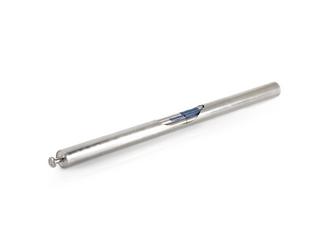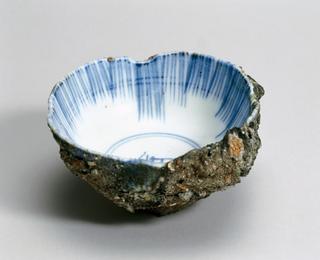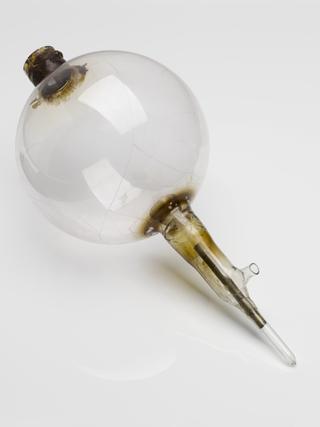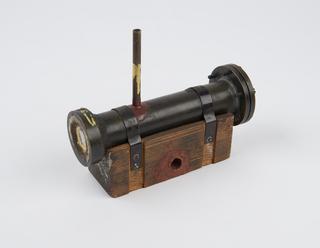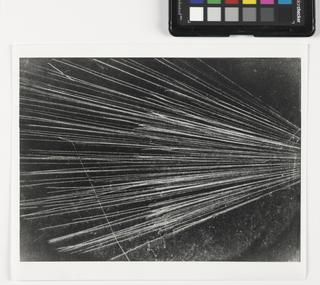
Presentation model of multi-stage image intensifier tube on rectangular plastic stand

Presentation model of multi-stage image intensifier tube on rectangular plastic stand, made by 20th Century Electronics staff in 1962. Given to the head of the company, Gilbert Tomes. During 1965, 20th Century Electronics (the forerunner of Centronic) developed image intensifiers for use in astronomy. A number of multi-stage devices were made using transparent antimony-caesium cathodes and using permeable filters as multipliers. Wall coatings provided the accelerating potentials and the intensified image appeared on the phospor-coated end window. The Admiralty in the UK and also government organisations in the Soviet Union expressed an interest in acquiring the image intensifiers, probably for military purposes. The devices could multiply the brightness of a faint images as much as 50,000 times, and were worth approximately £1000 each initially.
Details
- Category:
- Nuclear Physics
- Object Number:
- 2000-1507
- Materials:
- wood (unidentified), glass, aluminium (metal) and metal (unknown)
- Measurements:
-
overall: 80 mm x 163 mm x 80 mm, .1 kg
tube: 142 mm 30 mm,
- type:
- photomultiplier tube
- credit:
- Gilbert Tomes
